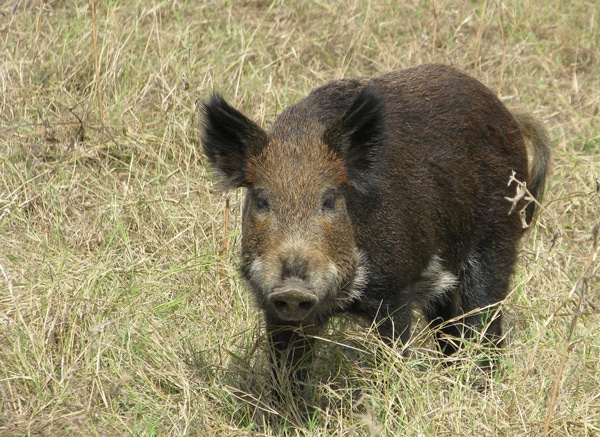
Military strategists tell us the success of prosecuting any successful plan against the enemy begins with gathering intelligence. It stands to reason then that when it comes to managing and controlling the estimated 2.6 million feral swine in Texas, officials need to collect more information.
That’s where Jared Timmons and Mark Tyson come in. The two Texas AgriLife Extension associates have been assigned with the monumental task of collecting data about the growing feral swine problem in Texas in an effort to provide landowners and state and Extension personnel the latest intelligence on where efforts are critically needed the most.
Timmons has been documenting feral hog activity in the Plum Creek area of Hayes and Caldwell counties over the last two years, operating an online pilot program that collects landowner reports for Texas AgriLife officials. The pilot program served as the platform for the launch of a new expanded online reporting system now available to landowners across the state.
“We need input from landowners and the general public to identify feral hog activities in general and where the greatest concentrations of these activities are occurring,” Timmons said. “We are interested in both public input of hog sightings and reports from landowners that help document control efforts and feral hog damage.”
A new website, http://feralhogreports.tamu.edu, offers both the general public and landowners the opportunity to report activity as it happens.
Timmons says of most concern is the extent to which feral hogs contribute to watershed pollution in Texas. By wallowing and defecating in and around streams, E. coli bacteria counts can spike and nutrient and sedimentation counts can increase rapidly.
Texas officials estimate feral swine cause $52 million in damages each year and point out that while eradication may not be possible in the near future, there is a growing need to increase control and management practices that can help protect watersheds and to provide safeguards for public health and welfare issues.
“The public and landowner reporting of feral hog sightings and/or signs of damage will help us locate areas of high activity and guide both management and educational efforts to reduce their impact to watersheds,” Timmons added.
If you are enjoying reading this article, please check out Southwest Farm Press Daily and receive the latest news right to your inbox.
Tyson, recently hired as an AgriLife Extension associate, joins Timmons in data collection. The two will work within the framework of the Lone Star Healthy Streams program, according to Dr. Jim Cathey, AgriLife Extension associate department head and program leader in College Station.
Tyson will be headquartered in College Station, developing and delivering educational materials to landowners in Grimes, Harris, Liberty, Montgomery, San Jacinto, Walker, Waller, Brazoria, Galveston, Fort Bend, Austin, Colorado and Wharton counties.
Timmons is assigned to the Plum Creek, Geronimo and Alligator Creek, Gilleland Creek and Lower San Antonio River watersheds. These watersheds are in Caldwell, Comal, DeWitt, Goliad, Guadalupe, Hays, Karnes, Refugio, Travis, Victoria and Wilson counties.
“Landowners work hard to reduce the negative impacts feral hogs have on land and water sources,” Cathey said. “Tyson will build on past efforts including 16 AgriLife Extension publications and five videos now available that teach feral hog biology and trapping techniques. He [and Timmons] will also conduct personal landowner visits and provide guidance on removing feral hogs.”
Feral hog problems are now being reported in 30-plus states. Earlier this year the USDA announced a comprehensive feral hog program for New Mexico involving federal, state and local government partners. USDA officials say because feral hog populations are much smaller in New Mexico, they hope to eliminate most of the wild animals in an effort geared toward eradication.
Texas officials say feral hog populations are too great and too widespread in Texas to hope for eradication but say the need for comprehensive reporting is the right step toward developing a better program to address the issue and to educate landowners on methods of trapping and removing feral hogs.
For more information about feral hogs in Texas and Texas AgriLife Extension Service educational material and videos, visit their feral hog website.
You may also like:
New publication: Feral Hog Approved Holding Facility Guidelines in Texas…
“Cry havoc and let slip the hogs of war”
U.S. Fish and Wildlife hearing on Lesser Prairie Chicken set for Feb.…
About the Author(s)
You May Also Like




